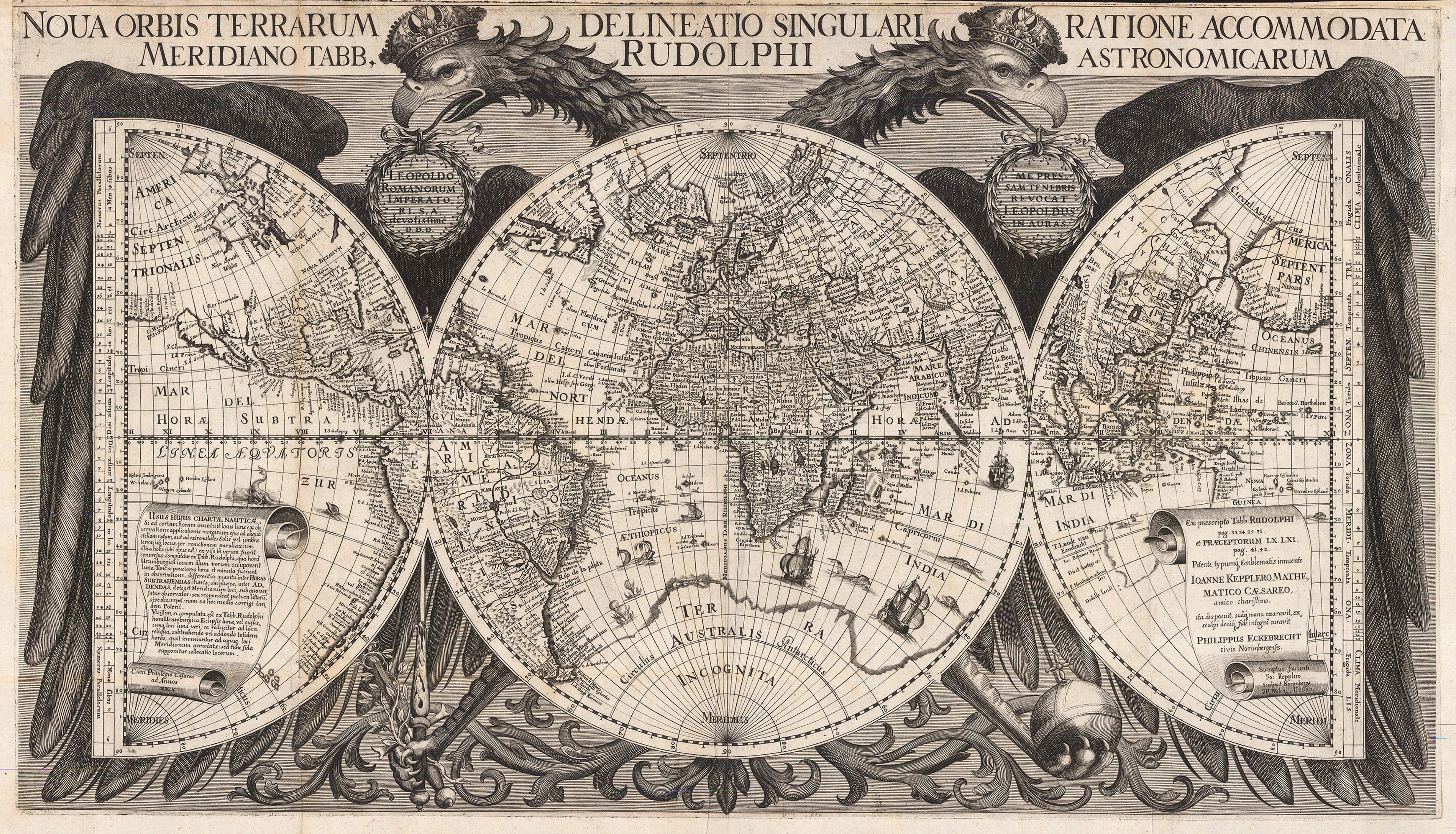Philipp Eckebrecht
Back to people overviewLittle is known about the life and career of Philip Eckebrecht, he was a skilled cartographer with strong social networks amongst Northern Europe’s cosmographical elite.
Eckebrecht created an intriguing world map for Johannes Kepler’s ‘Rudolphine’ (1627). One of the most visually striking of all world maps, it uses a bifurcated double-hemisphere projection and is mounted by a double-headed eagle representing the Holy Roman Empire.
Eckebrecht skilfully placed the Holy Roman Empire at the centre of the map, as the eagle’s heart. Scientifically, the map was the first to recognise the correspondence between one hour and fifteen degrees of longitude, visually expressing Kepler’s astronomical tables. In 1630, when it was first engraved, it was one of the first Dutch maps to plot Australia.
